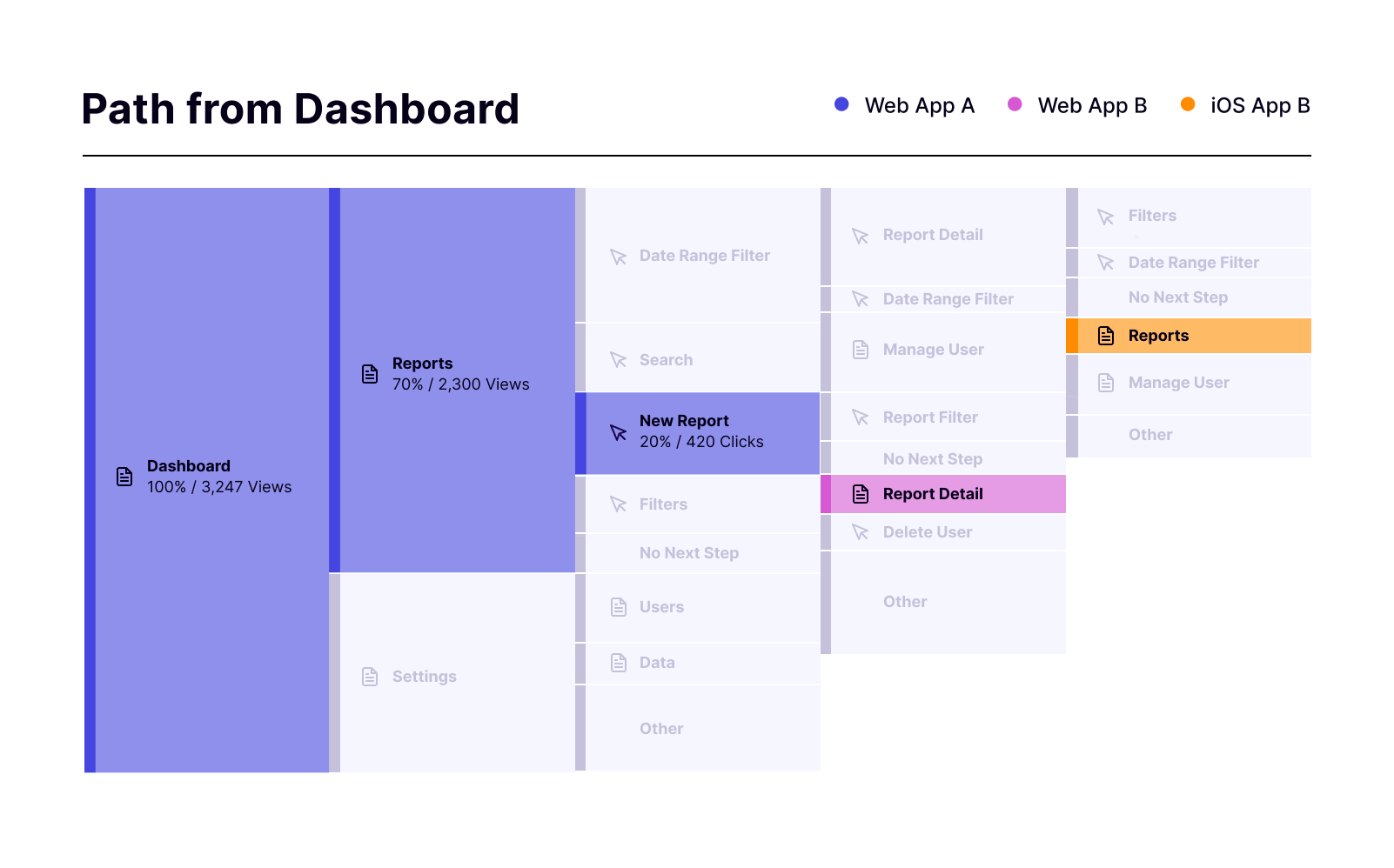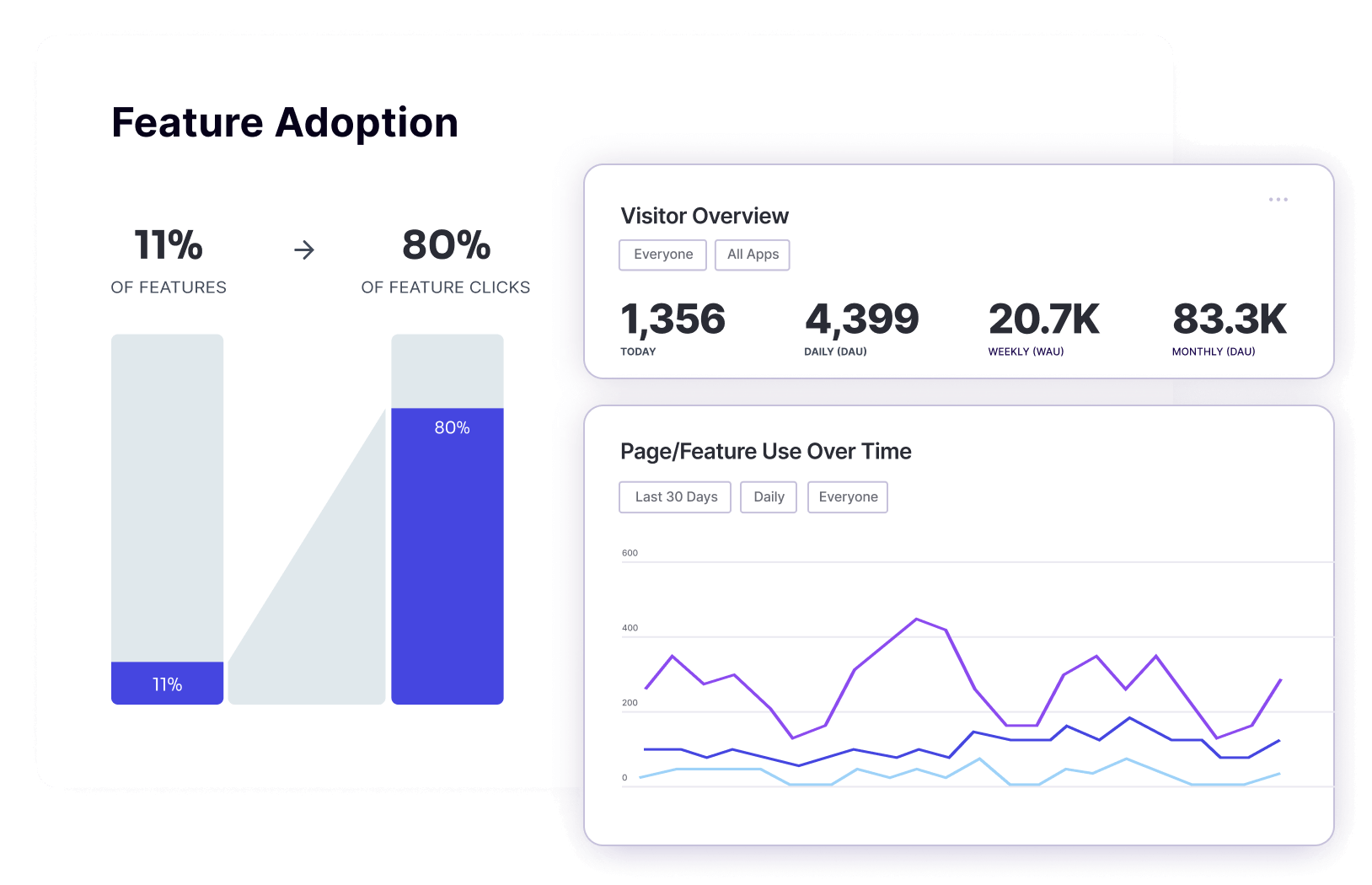Companies everywhere are feeling pressure to deliver more while spending less, especially when it comes to improving digital experiences for customers. At the same time, user expectations have never been higher. What’s a company to do?
For a growing number of businesses, the answer is: leverage a product experience platform.
This kind of platform helps you onboard and support users through key tasks and features by providing contextual information and guidance as users navigate the product. It delivers training and support right in your app itself, so that customers get timely, relevant help and information where and when they need it. It also serves as a comprehensive feedback management system, letting product teams deploy in-app polls and surveys to customers to get a sense of user sentiment.
Better software is a win for your users—and your business
Powered by the right product experience platform, users get the intuitive, seamless, and delightful experience with software they expect and deserve. On the flip side, the business leveraging it gets unprecedented insights into how their users engage with the product. The same analytics that powers that user experience (UX) optimization can yield insights to help businesses increase efficiencies, prioritize the right work, and accomplish countless other critical goals.
That said, not all product experience platforms are created equal. When evaluating which one is the best fit for you, here are some things to keep in mind.
Three things to look for in a product experience platform
- Deep—and actionable—insights about users: Most product experience platforms come with basic analytics. But rudimentary usage metrics will only get you so far. The best product experience solutions offer rich insights and capabilities from which product teams can take meaningful action. That means self-serviceable customizable reporting, custom visualizations, multi-app insights, and tools to understand the paths users take and how they use app(s).

These kinds of rich insights help product teams more effectively discern which users to target with which in-app guides. Absent this level of analytics, every feature may seem like it requires its own suite of in-app guides. That, combined with a lack of segmentation capability, will lead to both wasted time for product teams and annoyance among users bombarded with notifications they don’t want or need. - The right cost: A guiding principle when choosing a product experience platform should be that the value it generates exceeds what you’re paying for it. Ultimately, the purpose of leveraging this kind of platform is to grow your user base, boost adoption of your features, and make smarter decisions about where product teams should prioritize their efforts to increase user satisfaction. These actions, and the insights that power them, translate to better business results and a stronger outlook for your organization and product(s).
When evaluating product experience platforms, it’s important to consider not only the upfront cost, but rather the total cost, of the solution. The last thing you want is to sign up for a clunky, bloated tool that requires costly implementation services to even begin to be able to use.You also don’t want something that offers solutions for only one piece of what your product entails. Why settle for just analytics, or just the ability to deploy in-app guidance? A product experience platform should be just that—a platform—offering guides, analytics, and feedback all in the same intuitive and easy-to-use interface, and all united by a shared pool of data. The resulting synergies save you precious time and money, and let you start improving your product and business outcomes faster. - The ability to move quickly: A product experience platform that costs you extra money to install will invariably cost you extra time as well. Add in confusing and counterintuitive user interfaces (UIs), and you risk that the platform becomes mere shelfware that’s a drain on your budget.
The best product experience platforms offer product teams a simple, centralized UI—including analytics capabilities deeply integrated with guide-building tools. They’re also backed by customer success teams that are laser-focused on understanding your business needs to get you up and running fast. Don’t settle for cumbersome implementation and a prolonged back and forth with vendors just to get basic capabilities in place. Go with a solution that’s both comprehensive and intuitive for product teams.

The right product experience platform is more than just another product tool. It’s a game-changing resource that can fundamentally transform your user experience, business model, and product roadmap for the better.
To learn more about choosing the right product experience platform, check out what Pendo offers product teams here.

